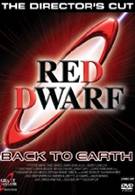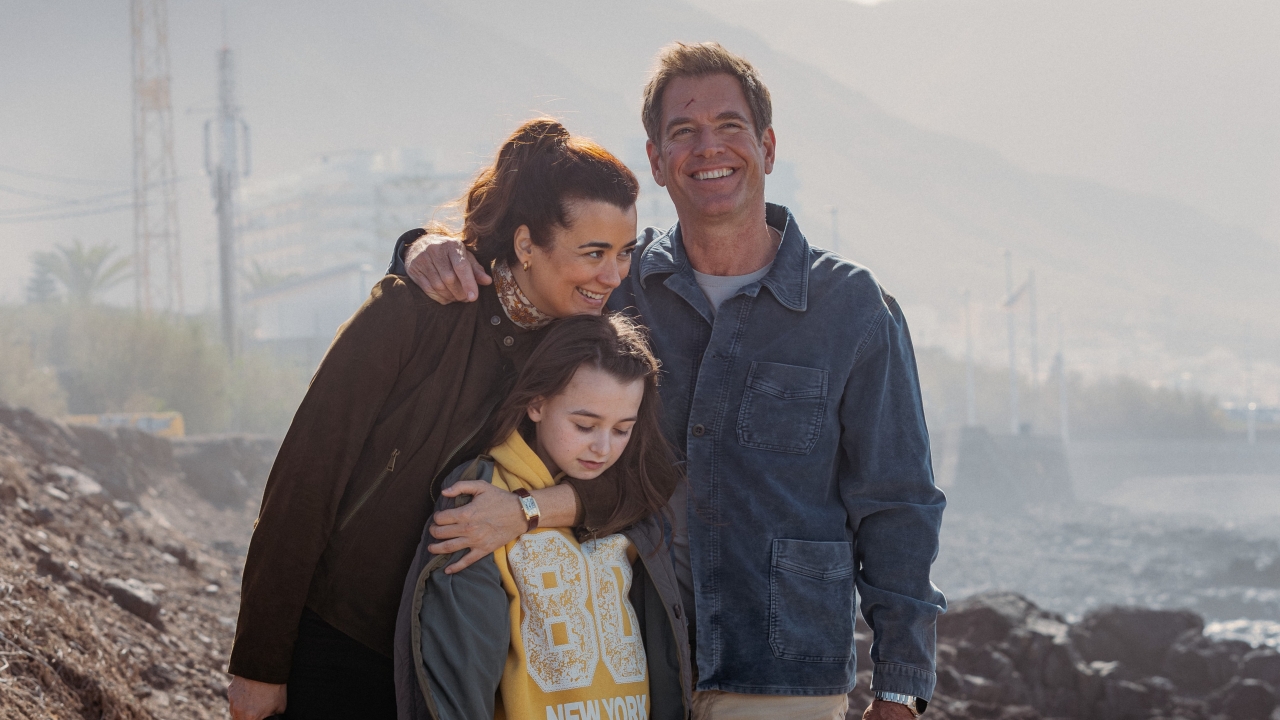The crew of the Red Dwarf return after a decade-long hiatus, and not much has changed. Lister is still finding new ways to annoy and disgust neurotic holograph Rimmer. Angular android Kryten still panics easily. The Cat is still fabulous (his lavender, bell-bottomed diving suit is a sight to behold). The gang continues with more or less the same routines they have all along -- driving each other to distraction and occasionally getting into outlandish adventures across the cosmos. After all, when you're the last remnants of humanity in a big, empty universe, what more is there to do? The answer, it seems, is to discover their own fictitious nature and parody Blade Runner. A lot. For the uninitiated, Red Dwarf is a science-fiction sitcom that follows the surviving crew of the eponymous mining vessel as they encounter every oddity the universe can throw at them, from future incarnations of themselves to mirror universes, and gleefully butcher science fiction's sacred cows. Premiering in February of 1988, the show introduced us to Dave Lister (Craig Charles), slob, who is sentenced to 18 months in hypersleep for smuggling his pregnant pet cat on board. Unfortunately, a radiation leak soon kills the entire crew, and Lister finally emerges from his cryo-chamber three million years later. He soon discovers he's not alone, however. Along for the ride are the ship's dry-witted artificial intelligence, Holly (first Norman Lovett, later Hattie Hayridge, both sadly absent this time); Lister's neurotic roommate Rimmer (Chris Barrie), resurrected by Holly as a hologram; and The Cat (Danny John-Jules), a humanoid creature evolved from Lister's long-dead pet. Over the years, more cast came and went, including the guilt-ridden android Kryten (first David Ross, then Robert Llewellyn) and Lister's one true love, Kristine Kochanski (originally Clare Grogan, then Chloé Annett...man, this show's had a lot of turnover over 20 years).
The opening scenes of Back to Earth give newcomers a solid enough feel for each character, and long-time fans will feel right at home. Rimmer is obsessing over making sure that his framed "Vending Machine Maintenance Man of the Month" certificate is properly leveled on the wall. Kryten is away on holiday, touring the broom closets on a distant deck of the enormous ship. Lister is cooking up a prank involving tomatoes and an iron that I won't spoil here. And The Cat...well, that would be telling. Suffice to say, the crew endures the latest in a long line of accidents, and a quick trip through a space-time portal later, they're walking the streets of Earth. Our Earth. The one where they're characters in a popular British TV show. After they discover that the show that is their lives is soon set to wrap up, they set off to track down their creator and give him what for.
While fans will take comfort in the characters' familiarity, Back to Earth actually seizes on that very concept to suggest that underneath all the banter...this is a desperately lonely group of guys. The neuroses that define each of them are so pronounced precisely because they're the neuroses that keep them from going insane being the sole occupants of a huge, empty spaceship floating through a huge, empty universe. The show never gets heavy-handed with it, but allows it to creep through subtly in everything from dialogue to set design. Rimmer actually asks Lister at one point if the hours he spent planning and preparing for his latest prank was worth it for the eight seconds of annoyance it caused Rimmer. Lister answers that it was, absolutely...and while he doesn't add, "...because otherwise I'd have stepped out an airlock years ago," the subtext is there. And while the show has the good sense never to let such depressing concepts get in the way of a good crotch-injury gag, there are some surprisingly weighty moments on display. An early scene where Lister mourns the loss of Kochanski is as emotionally raw and honest as anything you'd expect from a more serious program, and features a genuinely moving performance from Charles.
The miniseries also benefits enormously from the impressive CG work on display. As with the modern revival of Doctor Who, the days of cardboard sets and rubber monsters are history -- the Dwarf's interiors and exteriors look nearly as good as recent genre high-bars such as Firefly or Battlestar Galactica. The sense of the Dwarf's imposing scale, and the crew's comparative tininess, is also a lot more striking when they're standing amidst a lovely CG rendering of a cavernous cargo bay. Sure, the miniscule budget and dodgy effects were always part of the show's charm, but it's kind of nice getting to see what the Dwarf was really supposed to look like all these years.
Not that the effects and sets are anything more than icing on the cake, mind you. This show has always been about the characters, as any good show should be, and the real joy here is getting to see the guys facing down an unparalleled existential crisis: the fact that they're fictional characters. More importantly, they're fictional characters who've been put through years and years of misery for the laughs of an unseen audience, and now they're scheduled to be put out to pasture. Needless to say, the boys don't see simply going quietly into that good night as an option. It's quite an experience to live in fear, after all, and they want more life, fucker.
Suffice to say, by the halfway point Back to Earth turns into an unmerciful parody of Blade Runner. From a chase sequence through a surprisingly well-conceived futuristic Chinatown alleyway to a chilly interrogation of an Asian prop master who "just does noses," it's astonishing how well the show apes the iconic look of that film. It's more than just tipping a visual hat, however, as the script uses the familiar touchstone of Blade Runner to force these characters to come to grips with their own nature. We don't get any shots of Lister releasing a dove into the sky, but we do get a hilarious set piece involving Rimmer's crotch at the mercy of Lister and a universe-altering typewriter, and that's a trade well worth making if you ask me.
Red Dwarf: Back to Earth is more of the same, only shinier. Fans of the series won't be disappointed, and genre fans who haven't seen the show will find much to like and plenty to latch onto here. In addition to the aforementioned typewriter scene, Back to Earth pokes fun at fan culture, has great fun by introducing Lister to the actor who plays him, and even winds up twisting its core concept back around on itself in an unexpected and satisfying way. If there's a shortcoming, it's that, even at a short 70 minutes, the pace could still stand to be picked up occasionally. Then again, when it's the first Dwarf in a decade, that's a pretty flimsy complaint. All aboard, and here's hoping for series nine. Dwarf fans will find plenty to keep them occupied here. Disc one features two separate audio commentaries, one with writer/director/co-creator Doug Naylor and the other with the main cast of Craig Charles, Chris Barrie, Danny John-Jules, and Robert Llewellyn. Naylor's commentary hits upon various aspects of the revival, from writing to directing to the changes made in this "director's cut" of the miniseries. The crew commentary has fewer insights into production but more amusing anecdotes from the filming and the show's long history. It's the relaxed atmosphere of four guys who've been working together off and on for the better part of two decades, and it gives you the satisfying feel of being on the couch next to them, watching the show while sharing a few beers. Each commentary offers something different, so no matter what you expect when it comes to such things, you'll likely find something to keep you listening for 70 minutes.
Your Daily Blend of Entertainment News
If you're still craving more, disc two has plenty more to offer. A two-part "Making of Red Dwarf: Back to Earth" featurette provides well over an hour of behind-the-scenes material with the cast and crew. There's also a separate "featurettes" section with five more shorter documentaries: "The SFX of "Back to Earth," "Back to Earth Premiere," "Cast Signing Session," "Press Kit Video," and "Behind the Scenes Web Videos." Most of these are around five minutes long, but the SFX featurette actually runs closer to 20. Topping things off, you get trailers, photo galleries, and the always welcome "Smeg Ups" -- that'd be the blooper reel for you newcomers.
The discs look great, and while we didn't get a Blu-ray to review, the show looks great even on standard DVD. Thanks to a budget and a visual facelift, Red Dwarf has never looked better. Combine the snazzy new look with the usual mixture of pratfalls, acerbic dialogue, and genre in-jokes, and Back to Earth should be a no-brainer addition to any fan's collection.

